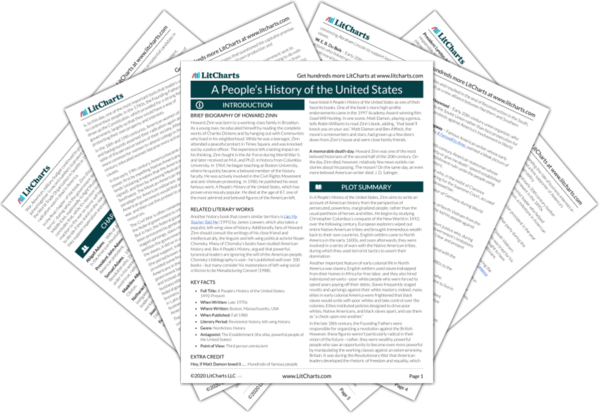Zinn is attentive to the reaction of artists and intellectuals to the Great Depression; he seems to respect authors like John Steinbeck for paying homage to the dignity of the American people in such novels as
The Grapes of Wrath. At the same time, Zinn makes it clear that the Establishment continued to oppress the poor and suffering. Indeed, the government turned its back on its own former troops. MacArthur is still regarded as a war hero, but he began his career by brutally suppressing his fellow soldiers in Washington, D.C.
